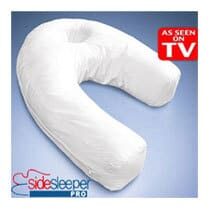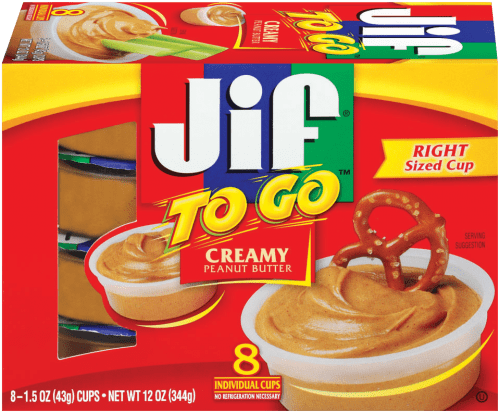On a recent Sunday morning, I was watching cable news channels and two different commercials had a word jump out at me, words that are commonly used in the Lean management system.
One commercial featured the term “mistake proofed” and another used the term “right-sized.” Let's talk about the terms and what they mean.
Mistake Proofed
 The first ad was a typical “as seen on TV” type product, an ad I would normally just tune out. But the phrase “mistake proofed” jumped out at me, so I hit rewind on the DVR. It was an ad for a “Side Sleeper Pro” pillow and the chiropractor who invented the pillow was pointing out how its design “mistake proofed” against the sleeper from rolling over too far on their side. I can't find a version of the commercial on YouTube that has that quote, unfortunately.
The first ad was a typical “as seen on TV” type product, an ad I would normally just tune out. But the phrase “mistake proofed” jumped out at me, so I hit rewind on the DVR. It was an ad for a “Side Sleeper Pro” pillow and the chiropractor who invented the pillow was pointing out how its design “mistake proofed” against the sleeper from rolling over too far on their side. I can't find a version of the commercial on YouTube that has that quote, unfortunately.
Mistake proofing, or “poka yoke” in Japanese, is the concept that we design equipment, software, or processes in a way that prevents errors or makes them less likely to occur. This systems view is a huge advance over just asking that people “be careful.” Mistake proofing or “error proofing” is an approach that recognizes people are human, we are fallible, and we have to design workplace systems accordingly.
Mistake proofing is a far preferable term to the commonly-used “fool proofing” or “dummy proofing” or “idiot proofing.” None of those phrases hold true to the Toyota “respect for people” principle. When workplace errors or medical mistakes occur, it's more often a systems and process issue – bad processes, not bad people. Errors don't occur because people are stupid.
Right Sized
Far too often, the term “right sized” or “right sizing” is an unfortunate business euphemism for layoffs. With Lean, of course, we emphasize NOT using layoffs to drive cost reduction, as that understandably kills any enthusiasm that employees would have for participating in continuous improvement efforts.
Traditionally, manufacturers thought “economies of scale” was the best way to go. Factories would often choose a single large machine that could crank out lots of parts instead of a greater number of smaller-capacity machines because the unit production cost was lower with the single giant machine. In the Lean approach, a machine like this gets called a “monument” and it's not meant as a complement.
A monument might have a lower production cost, but flow through the factory will be worse (meaning longer cycle times) because parts have to be moved to the monument (and wait in queue) and inventory costs are higher. Lean factories tend to use smaller scale production equipment that can fit right into the flow or in a U-shaped production cell.
Examples of right-sizing in healthcare (for the sake of flow) might be having an x-ray or a CT in the emergency room or having a specific lab or pharmacy for the emergency department. However, the dynamics might be different in healthcare as a CT scanner is extremely expensive. Having dedicated resources, like a STAT lab, might be a costly workaround to slow turnaround times from the main laboratory. Many hospitals are able to eliminate their STAT labs once the main lab has improved its turn around times with Lean – you get lower cost AND better turnaround times. A hospital Sweden decided it made sense to put in a “right sized” operating room in the cardiac unit just for pacemaker implantation (better flow for patients).
Oh, so what was the TV ad? It was for small cups of peanut butter, referred to as a “right sized cup.”
It's designed as a single serving package that you can pack in a lunch or take with you. At times, I've put peanut butter in a small tupperware container out of a full-sized jar. That's a pain.
The unit cost of the “Jif to Go” is higher ($0.24 per ounce) compared to a full-sized jar ($0.19 per ounce). But, you're not taking time to repackage the peanut butter and you're not washing that tupperware container. Downside to “Jif to Go” is the disposal of plastic cups (even if they are recycled). There's more packaging involved. But here's a case where a higher unit price might make sense to a particular customer for a particular purpose.
There are no easy cookbook answers with Lean. You always have to think through tradeoffs whether it's buying a factory machine, a CT scanner, or pantry staples.
What's Mark Reading?
- Safety Beyond Compliance (Industry Week)
- ORs under the knife: Lean techniques borrowed from manufacturing cut costs, improve satisfaction (Crain's)
- Doctors, nurses aren't the only ones who are finding work in health care (Boston Globe)
What do you think? Please scroll down (or click) to post a comment. Or please share the post with your thoughts on LinkedIn – and follow me or connect with me there.
Did you like this post? Make sure you don't miss a post or podcast — Subscribe to get notified about posts via email daily or weekly.
Check out my latest book, The Mistakes That Make Us: Cultivating a Culture of Learning and Innovation:











Haha!
Actually Mark, Toyota may have respect for people, but Ohno originally called “poka-yoke” as “baka-yoke” – baka is Japanese for stupid or idiot!
Changing it to “poka-yoke” was probably the respect for people bit.
At least they practiced improvement based on feedback from the employees on that.